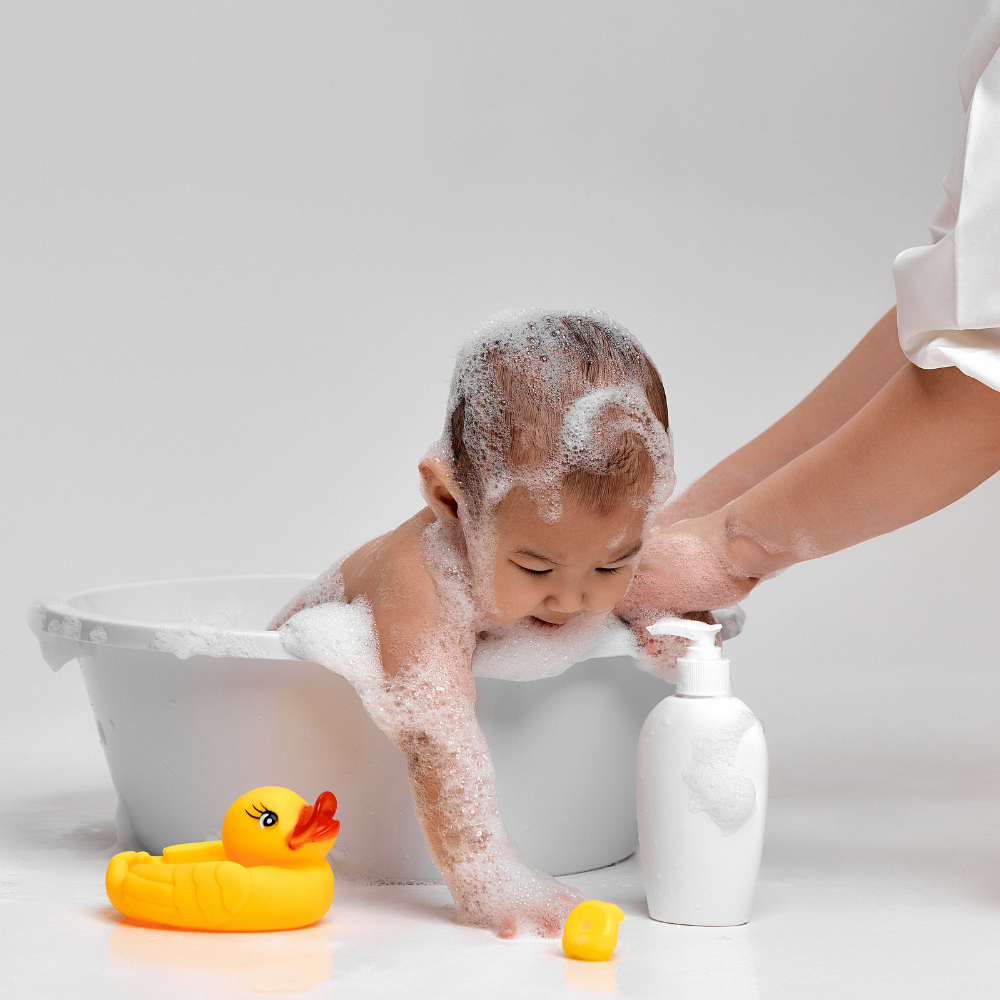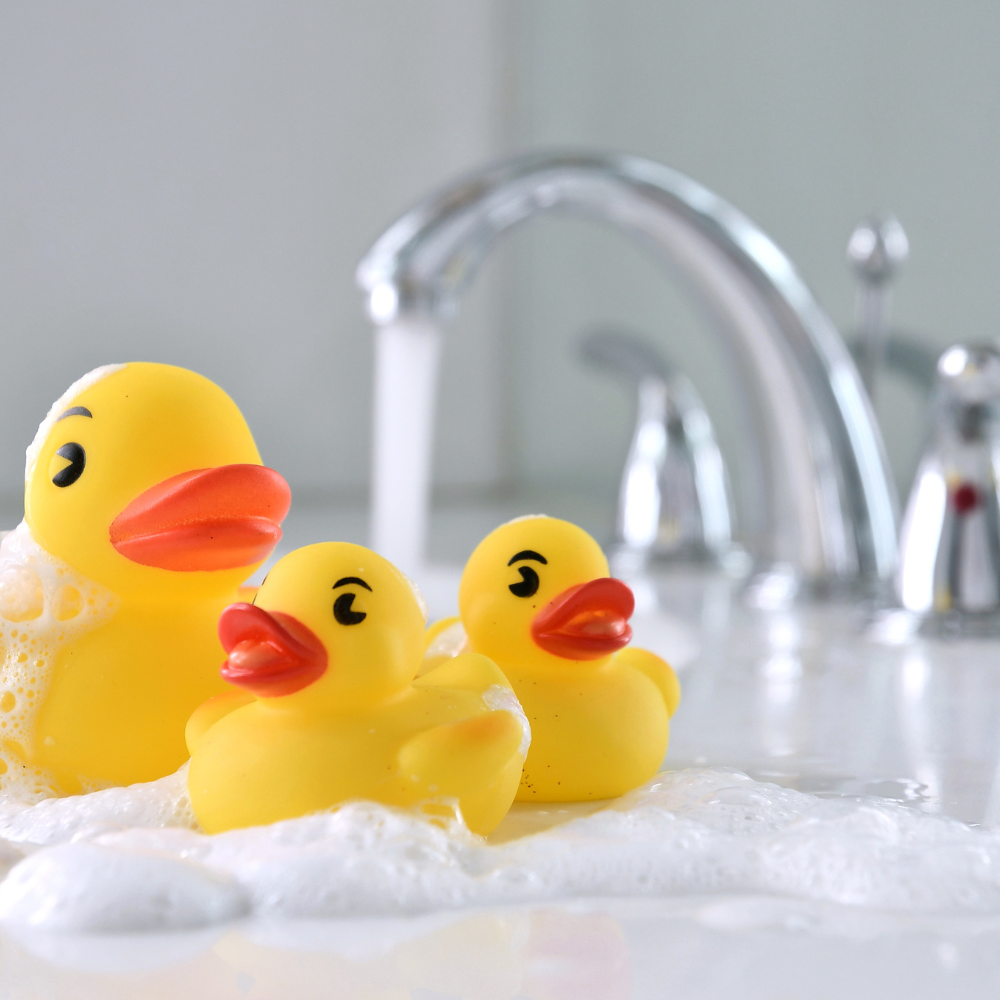Bath time is a fun and essential part of your baby's daily routine. However, with the constant presence of water and soap, bath toys can quickly become breeding grounds for mold and bacteria.
As parents, keeping our little ones safe and healthy is always a top priority. That's why it's important to regularly clean and disinfect their bath toys to prevent any potential health hazards.
In this guide, we'll discuss the best ways to clean different types of baby bath toys, from rubber ducks to plastic boats. We'll also cover some tips on how to maintain and prevent mold growth on these toys.
With these simple steps, you can ensure that your baby's bath time remains enjoyable while keeping their toys clean and hygienic.
Why It's Important to Clean Baby Bath Toys
Cleaning your baby's bath toys is crucial for their health and well-being. As babies are still developing their immune systems, they are more susceptible to illnesses caused by bacteria and mold. Imagine your child playing with a toy filled with mold or bacteria; it could lead to skin infections, respiratory issues, or worse.
Furthermore, bath toys often end up in your baby's mouth during playtime. This makes it even more important to regularly clean and disinfect them. Babies tend to put everything in their mouths as part of exploring the world around them, so it's essential to ensure that their toys are safe and clean.
In addition to health reasons, cleaning bath toys also help prolong their lifespan. Mold can cause deterioration and discoloration of the toys, making them less appealing to play with. Regular cleaning will prevent this from happening and keep the toys in good condition for a longer time.
Moreover, by keeping your baby's bath toys clean, you're also preventing any potential cross-contamination between different body parts or surfaces. This not only benefits your baby but also helps maintain overall household hygiene.
Benefits Of Cleaning Baby Bath Toys

The benefits of cleaning your baby's bath toys go beyond just keeping them safe and prolonging their lifespan. It also helps with the overall cleanliness and hygiene of your home.
Firstly, regular cleaning of bath toys can reduce the risk of mold growth in your bathroom. Mold thrives in moist and warm environments, making bath toys the perfect breeding ground. By regularly disinfecting these toys, you're preventing mold spores from spreading and potentially causing health issues for your family.
Secondly, clean bath toys mean a cleaner bathtub. When soap scum and dirt accumulate on dirty toys, they can transfer onto the bathtub's surface during playtime. This not only makes for a less pleasant bathing experience but also requires more frequent and intensive cleaning of the tub.
Lastly, regularly cleaning bath toys can save you money in the long run. By preventing mold and bacteria growth, you won't have to replace these toys as often. This not only saves money but also reduces waste, making it a more environmentally-friendly choice.
Steps to Clean Different Types of Baby Bath Toys

Different types of bath toys require different cleaning methods. Here are some steps you can follow to keep your baby's toys clean and safe:
Rubber and Squeeze Toys
Rubber and squeeze toys are popular choices for bathtime fun, but they can also harbor mold and bacteria inside their small openings. To effectively clean them, start by filling a bowl or basin with warm water mixed with mild dish soap.
Submerge the toys and use a soft brush or cloth to scrub the exterior, paying special attention to any seams or crevices. For deeper cleaning, rinse the toys thoroughly and then soak them in a solution of one part white vinegar to two parts water for about 10-15 minutes.
This natural disinfectant helps eliminate mold and bacteria. After soaking, rinse well with clean water and ensure the toys are completely dry before storing them. Regular cleaning will keep these beloved bath toys safe for your baby to enjoy.
Plastic and Floating Toys
Plastic and floating toys, like boats or animal figures, are also popular bath-time choices. To clean these toys, you can follow a similar method to rubber and squeeze toys. Fill a basin with warm water and mild dish soap, then scrub the toys with a brush or cloth.
For tougher stains or mold growth, use a mixture of equal parts water and white vinegar to soak the toys for about 10-15 minutes. Rinse well with clean water afterward and allow them to dry before storing.
Alternatively, you can also put these plastic toys in the dishwasher on the top rack for a more thorough clean. Just be sure to remove any detachable parts beforehand and check the manufacturer's instructions to ensure they are dishwasher safe.
Moldy or Dirty Toys
If your baby's bath toys have visible mold growth or dirt buildup, it's essential to clean them thoroughly before allowing your child to play with them again. To remove mold, make a paste using baking soda and water and apply it to the affected areas. Scrub gently with a brush and then rinse well.
For dirt buildup, you can use a mixture of warm water and white vinegar to soak the toys for about 10-15 minutes before scrubbing with a brush. Rinse well afterward and allow the toys to dry completely before storing.
Mesh or Fabric Toys
Mesh or fabric bath toys, like squirting animals or washcloths, can also accumulate dirt and bacteria over time. To clean these toys, start by washing them in the machine on a gentle cycle with mild detergent.
For tougher stains or odors, add white vinegar to the load to help disinfect and deodorize the toys. After washing, air dry the toys before allowing your child to use them again.
Alternatively, you can also hand wash these types of bath toys using warm soapy water and a soft brush or cloth. Rinse well afterward and allow them to air dry completely before storing.
So these are the steps you can follow to keep your baby's bath toys clean and safe. Remember to regularly clean them to prevent bacteria and mold growth, and always check the manufacturer's instructions for specific cleaning guidelines. By keeping these toys clean, you're not only ensuring your baby's safety but also contributing to a happier and healthier bath time experience for both you and your little one.
Does the Quality of Bath Toys Matter?

When it comes to bath toys, many parents may wonder if the quality of the toy matters. The answer is yes and no.
While high-quality materials like silicone or natural rubber can be safer for your baby, ultimately, proper cleaning and maintenance are more important factors in keeping bath toys clean and safe for your child to use.
However, investing in higher quality bath toys can often mean they are more durable and can withstand frequent washing without deteriorating easily. This means you won't have to replace them as often, saving you money in the long run.
Additionally, choosing non-toxic materials for your baby's bath toys can also be beneficial, as they are less likely to contain harmful chemicals that can leach into the water and potentially harm your child.
Mistakes to Avoid when Cleaning Bath Toys

While it's essential to clean your baby's bath toys regularly, there are a few mistakes you should avoid to ensure their effectiveness. Here are some common mistakes to avoid when cleaning bath toys:
- Using harsh chemicals: Avoid using bleach or other harsh chemicals on your baby's bath toys as they can be harmful to your child and damage the toy. Plus, these chemicals can leave a strong odor that may not be pleasant for your little one.
- Not drying toys completely: After cleaning, it's crucial to ensure the toys are thoroughly dry before storing them. Moisture can lead to mold and bacteria growth, which defeats the purpose of cleaning them in the first place.
- Not checking manufacturer's instructions: Each bath toy may have specific cleaning guidelines from the manufacturer, so always check before using any cleaning methods or products.
- Not replacing old or damaged toys: Bath toys can wear out over time and may need to be replaced regularly. Keep an eye out for signs of damage or deterioration and replace them when necessary.
- Not cleaning toys frequently enough: Bath toys can accumulate dirt and bacteria after each use, so it's essential to clean them regularly, preferably after every bath session.
By avoiding these common mistakes and following proper cleaning methods, you can keep your baby's bath toys clean, safe, and enjoyable for their daily bath time routine.
FAQs
How can I clean kids bath toys effectively?
To clean kids bath toys effectively, you can soak them in hot water mixed with a mild soap or vinegar solution. After soaking, scrub the toys thoroughly to remove any residue. For extra sanitation, use disinfectant wipes on the surface of the baby toys to kill any remaining germs.
How do I clean inside bath toys to prevent mold?
To clean inside bath toys and prevent mold, fill the toys with a mixture of hot water and vinegar, then shake them well. Squeeze out the water completely and let it air dry. You can also use hot glue to seal any holes in the toys to stop water from getting inside in the future, which helps prevent mold growth.
Can I sterilize bath toys, and how?
Yes, you can sterilize bath toys by soaking them in hot water with a mild bleach solution (1 tablespoon of bleach per gallon of water). Let the toys soak for about 5 minutes, then rinse them thoroughly with clean water to remove any bleach residue. Make sure to let the bathtub toys dry completely before the next use.
How do I keep baby toys dry after cleaning them?
After cleaning baby toys, it's important to dry them thoroughly to prevent mold and mildew. Use a bathroom exhaust fan to help circulate air, or place the toys in a well-ventilated area. Ensure that all water is drained from inside bath toys, and leave them out to air dry completely.
What is the purpose of using hot glue on kids bath toys?
Using hot glue on kids' bath toys is a preventative measure to seal any holes that could allow water to enter the toys. By sealing these holes, you prevent water from getting inside bath toys, which can reduce the risk of mold and bacteria buildup, keeping the toys safer for your child to use.
Conclusion
In conclusion, keeping your baby's bath toys clean is crucial for their health and safety. By following the proper cleaning methods and avoiding common mistakes, you can ensure that your child's bath toys remain hygienic and enjoyable for them to play with.
Remember to regularly check the condition of the toys and replace them when necessary. Additionally, investing in higher quality materials can also contribute to a safer and more cost-effective solution for your baby's bath time experience.
So next time you're giving your little one a bath, take some extra time to clean their toys thoroughly. Your baby's health and well-being are worth it! Remember, happy baths mean happy babies!
Subscribe to our email newsletter and unlock access to members-only content and exclusive updates.

Comments